In the dense forests, rugged coasts, and vast highlands of Washington State, a curious black bird moves with purpose and astonishing intelligence. Ravens, often misunderstood or dismissed as common scavengers, are now being recognized as one of the most intelligent birds in North America. With their haunting calls and sharp eyes, ravens aren’t just surviving in Washington’s diverse habitats—they’re outsmarting, adapting, and even thriving in the face of changing environments.
Though they’re often confused with crows, ravens stand apart not just in size and behavior but also in cognitive complexity. In Washington, where urban landscapes meet untouched wilderness, ravens display extraordinary problem-solving abilities, emotional awareness, and even what some scientists call “proto-culture.” These birds remember faces, plan for the future, and manipulate their surroundings in ways few species can.
This article dives deep into the surprising intelligence of ravens in Washington State. From field observations to academic research, from Indigenous lore to modern science, we’ll uncover how these remarkable birds challenge our understanding of what it means to be smart in the animal world.
Understanding the Raven: More Than Just a Bird
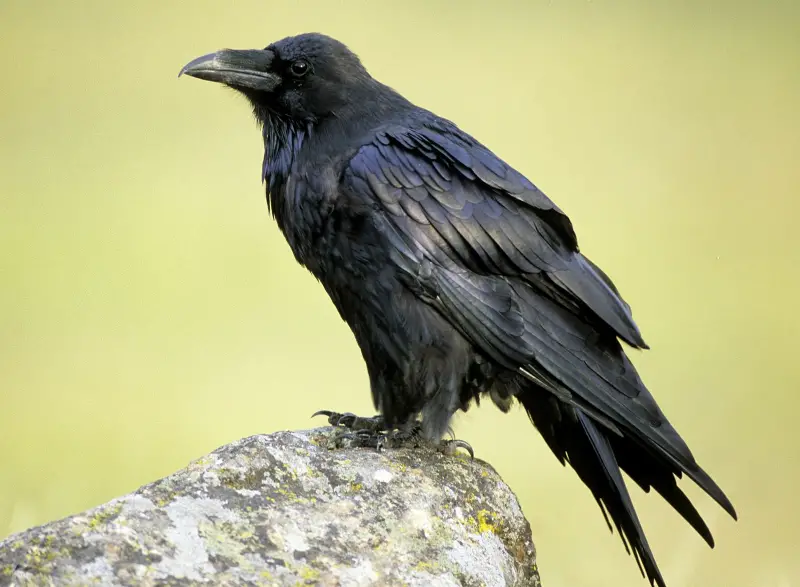
Ravens belong to the corvid family, a group of birds known for their remarkable brain-to-body ratio and behavioral complexity. Among their corvid cousins like crows, jays, and magpies, ravens are perhaps the most adaptable and socially sophisticated. In Washington, two main species of ravens are present: the common raven (Corvus corax) and the Chihuahuan raven (Corvus cryptoleucus), though the former is far more widespread.
These birds are not only distinguished by their size, shaggy throat feathers, and deep vocalizations but also by their interactions with their environment. Unlike most birds that follow instinctual patterns of behavior, ravens in Washington have been documented using tools, manipulating other animals, and solving complex puzzles in both natural and urban settings.
What makes ravens even more compelling is their ability to recognize individuals, including humans. In long-term studies conducted at universities and wildlife centers, ravens were shown to remember the faces of researchers—responding with affection or avoidance based on past interactions. In Washington’s public parks, rural trails, and even roadside rest areas, ravens have demonstrated uncanny awareness of which people feed them and which ones pose a threat.
Cognitive Challenges and Problem-Solving in the Wild
One of the most striking aspects of raven intelligence lies in their ability to solve problems creatively. In Washington’s Olympic Peninsula and the Cascade Range, naturalists have observed ravens manipulating objects to gain access to food. They are known to drop nuts onto roads, waiting for cars to crack them open, then swooping in after the vehicles have passed. In snowy or mountainous regions, they’ve been seen pulling up fishing lines left in ice holes or rolling rocks to uncover hidden insects.
The ability to plan multiple steps ahead in order to reach a goal is considered a hallmark of advanced intelligence. Ravens have passed tests similar to those used on primates, including using one object to obtain another, delaying gratification for a better reward, and even hiding food from other ravens while pretending to do something else. These deceptive behaviors hint at an awareness of others’ mental states—something psychologists call “theory of mind”—a trait rarely observed in non-human species.
Researchers in Washington State have run experimental setups that show ravens outperform many mammals in reasoning tasks. When given a problem with multiple components—such as pulling strings in the correct order to release a treat—they not only succeed but adapt their strategies after failures. This flexibility in thinking suggests that ravens aren’t simply mimicking behavior but are actively learning from experience.
Memory, Social Structure, and Emotional Awareness
Ravens in Washington are not just smart as individuals; they are smart as social beings. These birds form long-term pair bonds and also maintain complex social networks within their communities. They remember allies, recognize rivals, and sometimes engage in reconciliation behavior after conflicts. In some studies, ravens have been seen consoling distressed companions with physical closeness or gentle vocalizations.
In Washington’s varied habitats—from the dry shrub-steppe of Eastern Washington to the foggy forests of the Pacific coast—ravens adapt their social behavior to the environment. In areas with higher food scarcity, ravens may form temporary alliances to gain access to shared resources. In richer environments, they become more territorial and cunning, even feigning indifference to food to trick others.
Memory plays a central role in these interactions. Ravens recall the locations of dozens of food caches and will sometimes move food from one hiding spot to another if they suspect they were being watched. In Washington’s forests, where predators and competitors abound, this kind of memory gives them an edge in survival.
Perhaps even more surprising is evidence suggesting ravens can understand fairness and reciprocity. In controlled environments, they have been observed refusing to cooperate with individuals who previously cheated them, while maintaining partnerships with reliable allies. This level of emotional discernment and memory points to a moral compass of sorts—one that’s especially advanced for a non-human species.
Communication and Language-Like Abilities
In Washington’s mountains and farmlands, the vocalizations of ravens fill the air with clicks, croaks, whistles, and even mimicry. These sounds aren’t random; they form a rich language system that is still being decoded by ornithologists. Ravens have been recorded mimicking human speech, other birds, and mechanical sounds. But beyond imitation, their natural calls appear to carry complex messages.
Ravens use different calls for alerting others to danger, claiming territory, attracting mates, or coordinating food discoveries. In some areas of Washington, groups of ravens seem to develop localized dialects—variations in calls that may reflect regional identity or specific group membership. This linguistic diversity is rare in the animal kingdom and speaks to ravens’ adaptability and social intelligence.
More fascinating still is the evidence that ravens use “referential gestures.” Similar to how humans point to objects to communicate, ravens have been seen using their beaks to show objects to each other—whether it’s a shiny item, a piece of food, or a twig. These gestures appear to be intentional acts of shared attention, suggesting an early form of symbolic communication that once was believed to be uniquely human.
Ravens in Urban and Rural Washington: Adaptation and Ingenuity
As Washington State becomes more urbanized, many wild animals struggle to adapt to human-dominated landscapes. Ravens, however, seem to be thriving in both city and countryside. In urban centers like Seattle and Spokane, they raid trash bins, nest in stadiums, and use buildings as high perches to watch traffic and people. Their ability to read patterns of human behavior allows them to time their actions with uncanny precision.
In rural Washington, especially around farmlands and small towns, ravens form relationships with livestock and machinery. They follow tractors during harvests, wait by roadside for carrion, and even learn the schedules of farm routines. Unlike many species that view human development as a threat, ravens use it as an opportunity. Their ability to adapt to new environments is one of the clearest signs of their intelligence.
This adaptability comes with challenges, as humans often misunderstand or fear ravens due to their dark coloration and ominous reputation in folklore. Yet in Washington, efforts are growing to educate the public about the ecological benefits of ravens. They help clean up waste, control pest populations, and even serve as environmental indicators—alerting researchers to changes in the health of ecosystems through shifts in their behavior.
Cultural and Mythological Significance in the Pacific Northwest
Long before scientific studies revealed their intelligence, the Indigenous peoples of Washington State revered ravens as powerful beings. In many Native American traditions, particularly among the Coast Salish, Tlingit, and Haida nations, the raven is a central figure in creation stories, often depicted as a trickster, a bringer of light, or a shape-shifter.
These cultural interpretations highlight traits that modern science now confirms—cunning, adaptability, and awareness. The raven in mythology is not a passive creature but an active force, constantly changing the world around it. In oral traditions passed down for generations in Washington’s tribal communities, the raven often teaches moral lessons, uses humor to outwit adversaries, and brings balance to the natural order.
Today, the symbolic presence of the raven continues to influence art, storytelling, and spiritual practice throughout Washington. Totem poles, carvings, and paintings often depict the raven with exaggerated features—large eyes, wide beaks, and swirling wings—emphasizing its watchfulness and transformative power. These cultural layers enrich our understanding of the raven not only as a biological species but as a figure of deep human connection.
Scientific Research and Ongoing Discoveries
Washington’s universities and wildlife institutions have become key players in the study of raven cognition. Collaborative projects between local researchers and international scientists continue to uncover new dimensions of raven intelligence. The University of Washington and other regional centers have hosted observational studies, controlled experiments, and field surveys focusing on problem-solving, memory, and vocalization patterns.
What makes the state especially valuable for raven studies is its ecological diversity. From the Cascade Mountains to the Columbia Basin, different populations of ravens encounter different challenges—and thus display different solutions. By comparing urban ravens to their wilderness counterparts, researchers can study how intelligence evolves in response to environmental pressures.
Current research is exploring topics such as long-term memory retention, social cooperation in the wild, and even possible evidence of play behavior in adult ravens—a trait associated with higher cognitive development. As our tools and methods improve, we may soon unlock even more secrets from the black-feathered minds soaring over Washington’s skies.
Conclusion: A Hidden Genius in the Skies of Washington
Ravens in Washington State are more than just background characters in the natural world—they are intellectual marvels hiding in plain sight. From their advanced problem-solving skills and emotional intelligence to their cultural symbolism and adaptability, ravens challenge the boundaries we once believed separated humans from the rest of the animal kingdom.
As scientific research continues and cultural appreciation grows, the raven’s reputation is evolving from mysterious scavenger to cognitive pioneer. Their presence in Washington—whether on mountain peaks, coastal cliffs, or busy city streets—invites us to look more closely at the minds of those who fly just above us. They’re not only watching, learning, and remembering—they’re thriving.
And now that you know how smart ravens truly are in Washington State, perhaps the next time you hear one calling from a tree or soaring overhead, you’ll wonder: is it watching me too?
FAQs About Ravens in Washington State
Are ravens common in Washington?
Yes, ravens are widespread throughout Washington State. They can be found in forests, mountains, coastal cliffs, and even urban areas like Seattle and Spokane. Their adaptability to different habitats makes them a common and highly visible species across the region.
What makes ravens in Washington so intelligent?
Ravens in Washington display advanced problem-solving, tool use, memory, and social reasoning. Their intelligence is shaped by environmental diversity—from coastal food sources to mountainous challenges—allowing them to develop and demonstrate complex behaviors.
Can ravens in Washington mimic human speech?
Ravens have been observed mimicking a wide range of sounds, including human speech, car alarms, and animal calls. While this ability is more common in captive birds, some wild ravens in Washington have been recorded imitating sounds from their surroundings.
How do ravens communicate with each other?
Ravens use a variety of vocalizations, body language, and even object gestures to communicate. In Washington, they’ve been seen using unique calls to warn of danger, attract mates, or signal food availability—sometimes even developing regional “dialects.”
Do ravens live in Washington all year?
Yes, ravens are non-migratory and reside in Washington State year-round. They are highly resilient and can thrive in both wintery mountain climates and temperate coastal zones, making them a consistent presence throughout all seasons.
Are ravens protected in Washington?
Yes, ravens are protected under the Migratory Bird Treaty Act, which prohibits harming, capturing, or killing them without a permit. In Washington, it is illegal to disturb their nests or handle them without appropriate authorization.
What is the cultural importance of ravens in Washington?
Ravens hold deep spiritual and symbolic value for many Indigenous tribes in Washington, particularly among Coastal Salish and Haida cultures. Often seen as creators or tricksters in mythology, ravens are featured in oral stories, art, and ceremonial practices.



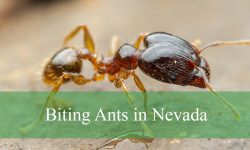
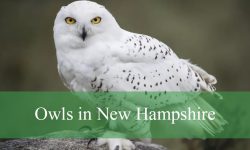
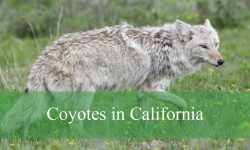
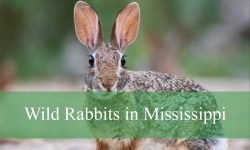
We live in Port Angeles WA on 20 acres, partially wooded, partially pasture. We have many ravens and crows that nest here. The ravens are always so vocal and curious. They come to our livestock water tanks in groups to drink, they clean up grain the cattle leave, they rid the pasture of voles and gophers that create holes and endanger our livestock. They vocally greet us daily, purposefully, and we call back to them. It’s amazing to have one fly so close by you hear the air cavitation of its wings. We watch aerial battles between them and the bald eagles when they are nesting, the ravens team up to drive the bigger eagles away. Although having a bald eagle use a large puddle in your pasture as a bird bath is a miracle to watch. We love our ravens, and feel that they have welcomed us. We do put out treats from our garden and fruit trees for them, and I share some of my homemade bread with them in winter. We also make room in our open hay barn in winter for them to get into a warm and protected spot in bad weather. Ive watched a couple bring gifts and drop them, a pretty rock, a large feather, a particularly shaped leaf or twig. I find my heelers hair in their nests, when I brush the dogs I put the hair out in the pasture for the birds to use. It’s in many nests around the ranch. They are amazing birds